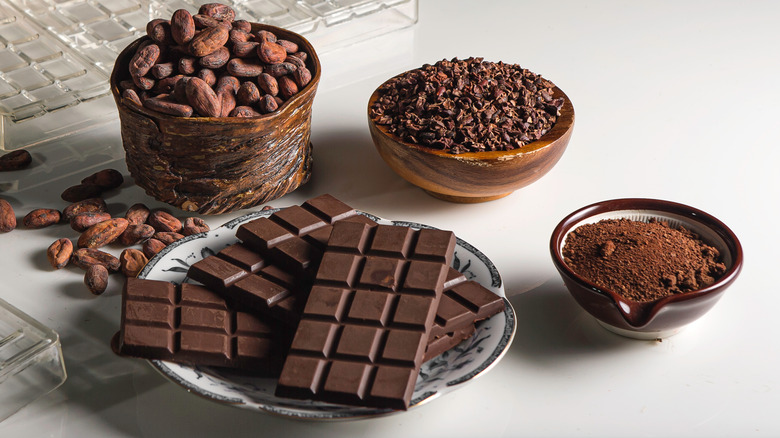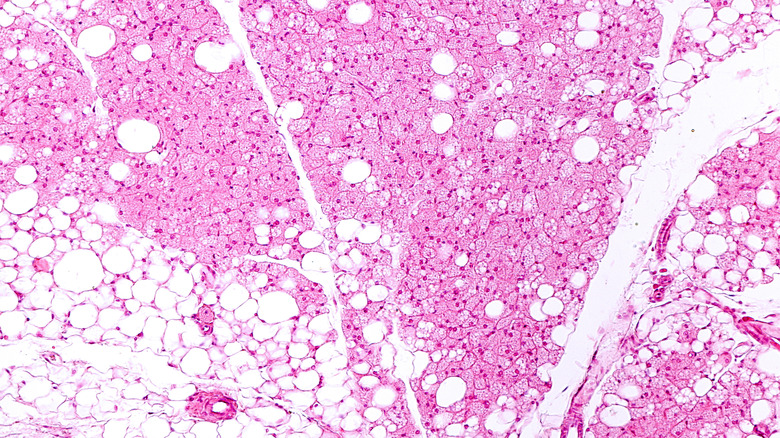New Study Suggests Link Between Food Flavoring And Fat Burning
A new study published by Nutrients suggests a potentially new way to help people combat diseases related to obesity. The study was led by Professor Naomi Osakabe from the Graduate School of Engineering and Science at Shibaura Institute of Technology in Japan and it took a closer look at how flavan 3-ols (FLs) affect fat (via Medical Express). The FLs contain polyphenols that are found in cocoa, apple, grape seed, and red wine. When FLs were consumed by mice, the scientists found that fat began to brown, proving a direct correlation between the two factors. Even though additional research and tests are needed, people are understandably excited to learn about these findings.
If you're not sure why brown fat is better for obesity-related diseases, it's because of the different purposes brown and white fats serve. According to Memorial Sloan Kettering Cancer Center, brown fat tissue is used to heat the body, while white fat tissue is stored as an energy resource. So, a higher presence of brown fat results in fat burned more quickly. Unfortunately, brown fat is naturally less common in adults, which is why the findings of the new study are so important.
This is what the study found
The key that allows brown fat to burn for more immediate use is that it has more mitochondria (which are "subcellular organelles associated with energy production") compared to white fat, explains Medical Express. When people have been exposed to the cold, restrict their calories, or exercise, fat browning occurs. In the latest study, it appears that consuming polyphenols found in certain foods could also activate this phenomenon. So, increasing the amount of brown fat through activating existing brown fat tissue and sparking the browning of white fat would both be beneficial to combat and prevent some cardiovascular and weight-related diseases.
Medical Express also points out that this study is not the first to uncover the power of FLs. Apparently, foods high in FLs can help improve glucose and insulin levels, too. Ultimately, the science behind fat browning is still under review. As the study was conducted only on mice, more tests will need to be performed to learn just how this discovery can be put into practice for humans.

